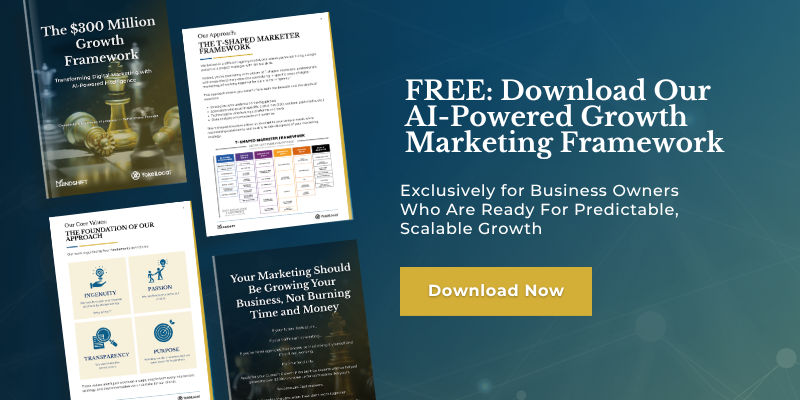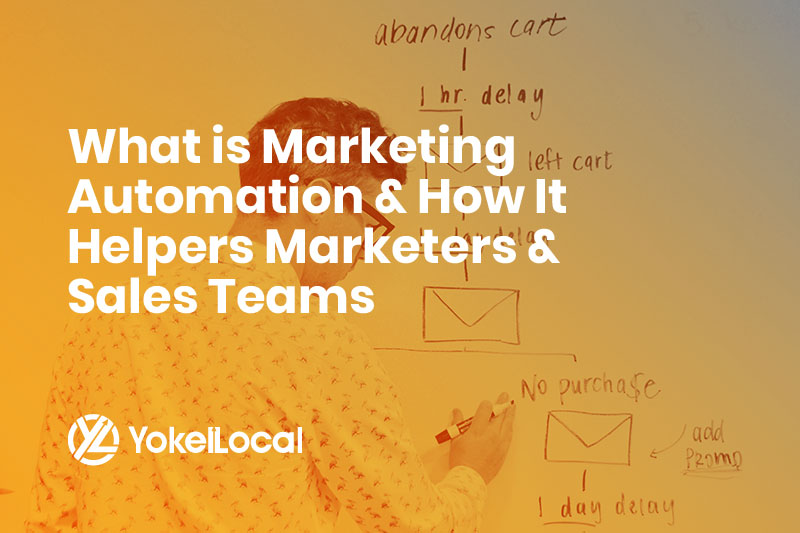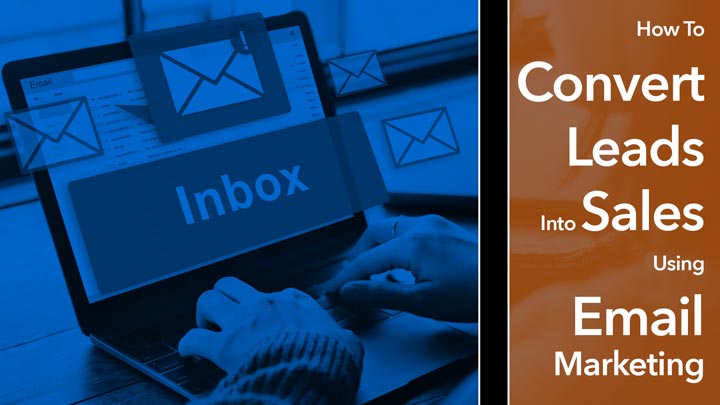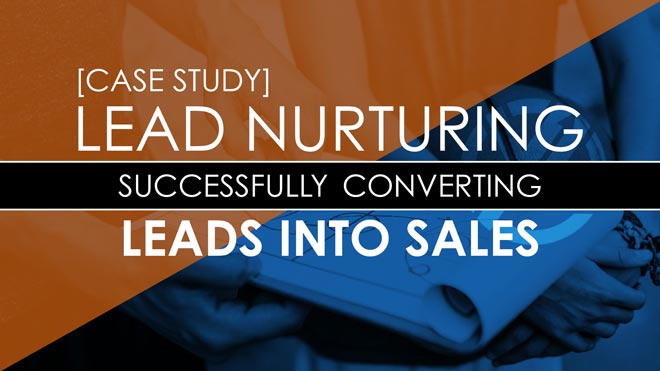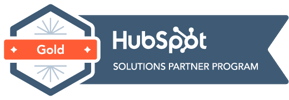Lead nurturing... It’s the answer to the very familiar question most business owners ask, “How do you convince leads not yet ready to buy to make a purchase?”
Video Summary
In this case study video, we’ll discuss in-depth an example of step number 4 of our 6-step process, the automated email nurturing sequence. It’s the answer to the very familiar question most business owners ask, “How do you convince leads, not yet ready to buy, to make a purchase?”
If you’re brand new to our organization or our website, and you’re checking out these inbound marketing case studies for the first time, here’s a little background on our process.
We have a 6-step process that we overlay over every business that we work with, small, medium, or large. We call it the 6 Core Elements that Help Bring Website Visitors Into Leads and Sales (or to Help You Grow Your Business). We also call it Inbound Marketing.
As you watch step number four of the process outlined in detail, you’ll be introduced to elements of marketing automation that showcase why it’s such a beneficial tool to cultivating a loyal customer base.
Lead Nurturing (Video Transcript)
Hey, how are you doing, my friend? Darrell Evans here, and welcome to another case study video, where, in today’s video, we’re going to be going through another example of an automated sequence in step number 4 of our 6-step process.
If you’re brand new to our organization or our website, and you’re checking out these case studies for the first time, you should know that we have a 6-step process that we overlay over every business that we work with, small, medium, or large.
We call it the 6 core elements that help bring website visitors into leads and sales, to help you grow your business. We also call it inbound marketing, if you will.
We’re a HubSpot Partner and today we’re going to be talking about step 4 and a particular case study for one of our clients who happens to be in the Lasik industry, the Lasik eye business.
Obviously, I didn’t have Lasik because I’m wearing glasses. But this particular case study, again, whether you’re in the Lasik space or another industry, just understand the psychology and methodology behind this e-mail nurturing sequence, and through this, you should be able to pick up some nuggets that you can take back and use in your own business.
It doesn’t matter if you’re in the service sector, professional services, you could be in a product business, an e-commerce business—I mean, we have this conversation with all types of businesses.
The process does take a little bit of different context depending on your business, the sales cycle, the life cycle of your buyer, those kinds of things, but there are three things that have to happen before we ever get to an automated nurturing sequence.
Number one, we have to clearly understand who your buyer persona is. We have to really understand not only who they are from a demographic standpoint, but what their pains are—what are they really coming to you to solve?
And we find that a lot of business owners still don’t have a really good idea of what that is, and we really want to work with the pain and figure that out.
Number two, we have to figure out how we’re going to get those folks to your website. We’re doing online marketing, we’re doing digital marketing—you’ve got to know how to get them to your website, and there are no shortage of ways to do that, but we want to make sure we get them there.
Once we get them to your website, one of the big complaints we always hear is, “Darrell, we’re getting traffic to the website, but we’re not getting leads. The phone’s not ringing. I mean, my gosh, how much do I have to pay to get that to happen?”
You talk about getting leads and I’ll talk to you about what we did to put in place, to help generate more leads for this client. We actually did two things.
I don’t know if I’ll have enough time in this video to cover both of them because one is outside of the scope of this particular nurturing sequence.
And that kind of brings me to a neat point: everything doesn’t go through one funnel, if you will. Everything doesn’t go through one sequence.
And I think a lot of business owners, they pigeonhole their mindset on how a customer is going to journey to your front door, or journey to your business, your shopping cart, if you’re in the e-commerce business. But that’s not the case. We really talk about all different types of buyers that are going to come through your door.
I’ll breakdown the types of buyers that we are working with in this particular sequence.
We talked about three steps: buyers personas, getting traffic, turning that traffic into leads, and we’re going to be talking about step four, which is the automated nurturing sequence.
(Let me go ahead and move my camera off the screen for just a moment, so you can see the nurturing sequence that we’re going to be talking about today. Let me see if I can zoom out just ever so slightly. There we go.)
Let’s talk about, first of all, how we converted a lead. In this particular campaign and this particular sequence, and we’ve got a number of sequences. But in this particular sequence, what are we dealing with? Let’s talk a little bit about the buyer persona.
The buyer persona in this particular business, we are dealing with two primary concerns. When someone’s thinking about eye surgery—and I was a candidate for a while, and I ended up choosing not to do it—most of the time, they’re either afraid of the surgery because of the potential safety ramification, or they object to the cost.
Those are the sort of the two primary paradigms that we are up against when somebody starts the process of thinking about having Lasik eye surgery.
What we did in this particular example was we said, “What are all of the sub-factors? What are all of those sub-emotions going through people’s minds when they’re thinking about Lasik surgery?"
What we did was we boiled that down into a very simple report called the “10 Lasik Myths Report.” There’s a fancier name on the landing page, but again, for privacy, we’re not going to reveal where that landing page is, and the name of that document, because this is for a paying client, of course. We would respect you in the same regard.
And once again, if you’re watching this, don’t think you’re just going to borrow these subject lines and make it go work magic, because the magic—while part of it is in the subject line, part of it is in the actual e-mail itself.
What happened here, what we know about the buyer for Lasik is the buyer takes a while to decide. When we first started working in this space, we learned that the buyer could literally take 5 years to decide.
At first, I thought that was kind of funny, and I was thinking there’s no way that someone could take 5 years to decide on Lasik, and then I thought about when I first started thinking about Lasik and it was in 2002. Right now, at the time of recording this video, it’s 2017, and you see I still haven’t had it.
It started making sense, but that’s also part of the work we have to do. Before we start marketing and executing tactics, we have to know who the customer is and what’s going on in their mind.
We got them to the website, so we’re not going to talk about SEO, and pay-per-click, and social media, but we used all three of those avenues. We used blogging and all kinds of stuff.
We had a very fully loaded campaign for this particular client. But when they got to the website, we made them an offer. And what we were doing was working at the very top of the sales funnel on this particular nurturing sequence.
If you follow our information, if you follow our methodology, there’s three phases that all of your buyers will go through. Number one is an awareness stage, which is what we call at the top of the sales funnel. Number two is a consideration stage, which is kind of just lodged in the middle, and then the decision stage, which is at the bottom of the sales funnel.
This particular campaign fits at the very top of the sales funnel, and we get a lot of pushback from businesses who don’t want to put this kind of funnel in place, but the reality is this is what we call a set it and forget it sales funnel, which means your sales team doesn’t have to engage with these prospects when they come through.
They’re not going to take your prospects’ time. We know exactly how to get them from this stage to the middle of the funnel. And again, I don’t have time in this video to break down the middle and the bottom sequences, but for the sake of this video, understand this is the top of the sales funnel in what we call the awareness stage.
Somebody has become aware and they’re really thinking, “Is this something I really should do?”
They’ve downloaded the report. What happens next? Right away, we’re going to send them an e-mail right away.
We always have a thing we believe that we need to make sure that in case the web froze, or their internet crashed, or somehow they got distracted when their phone rang on their mobile device, we want to make sure we send them an e-mail and get them the report.
We do that in e-mail #1. Not too much, nothing too fancy in that e-mail. #2, just a couple days later, we’re now starting to move with this particular buyer persona.
We’re moving them into what I would call believing that they can have it. Let me use a better phrase for that. So the title is, “Amazing vision by Monday,” so we’re sort of future-pacing that they could literally be out of glasses by Monday.
Now why did we choose Monday? Could have been Saturday, could have been Tuesday—doesn’t really matter.
What we’re trying to do is we’re trying to figure out if this buyer is in a short-term decision process because even though this is a top of the funnel sequence, what if this buyer is ready to go now?
We don’t want to pound on them but we’re sort of future-pacing it that literally, you could have perfect vision, or you could have great vision by Monday.
If they download it on Sunday, Monday is the next day. If they download it on Tuesday, inside of a week they could have amazing vision by Monday. So inside of this, we’re sort of future-pacing to see if they’re really ready to go.
The next e-mail, we’re going after the idea that is it safe or is it not safe? Now, we do address this in the report, but not everybody reads the material that they download. Think about what you download off the web. Do you read it all? No, you probably don’t.
We’re going back and sort of recycling some of the information in the report, so in this particular one, “Is it safe?” So, again, if they’re in one of those buckets, the safe bucket, meaning are they afraid of it and they’re not sure it’s safe or the money side—they’re in the safe bucket, so we’re going right after the number one fear, or the number two fear, depending on what type of buyer it is.
The fourth e-mail in the sequence is sort of a testimonial video. We love to do testimonial videos in our automated nurturing sequences because one of the best ways to get somebody to convert is the words of their peers.
It’s one of the reasons why Yelp and Google Reviews, and all of these review sites, have just blown up, because most of us don’t want to be sold, but they will take the advice of their peers.
Not just advice of their friends, but their peers, people who are like them, who are afraid of the same things, who are concerned about the same things.
So in e-mail number four, we’re dealing with this idea of a person who essentially said he hated wearing glasses, and he left a nice testimonial after he got his surgery. Very next e-mail, Kate finally took the plunge.
In this e-mail, we’re telling a bit of a story. Storytelling is so powerful. When you look at the way we fall into a movie, for example, we go into a movie and we’ll sit there for two, two-and-a-half hours, whether we like the movie or not. We fall into story.
And I don’t have time to get into how stories work and the framework of stories, but in e-mail #5, we’re telling a story. What we’re simply trying to do is bring someone into the conversation and keep them around.
Now, I’ve got a little bit of an orange block here because the name of our client is in this particular e-mail. But it’s very straightforward.
You’re probably smart enough to figure this out, but we’re saying, “Does [the name of the company] offer financing?” So again, we’re going to that other concern, which is financing.
In this particular e-mail, we’re inviting them to take a look at our financing offer because this particular doctor does offer financing and we’re trying to move them to the middle to the bottom of the funnel.
Let me wrap this video up by covering these last two. 50,000 procedures—what we’re doing in this particular e-mail is we’re showing social proof. We’re trying to give authority to this doctor.
The doctor has done over 50,000 surgeries—I think by the time I’m done recording this video, he’s now over 60,000—but we’re trying to give authority that you’re in the right hands.
We’re still dealing with the psychographics of a very expensive procedure, it’s possibly risky, that kind of thing. Sure, it’s been around for 15.5, 20 years now, but we’re trying to say, “You’re in the right place. You’ve got a great doctor. He’s done a ton of these procedures, and he’s got, of course, great online reviews.”
We’re using a little bit of social proof in this particular example and building authority—this is called an authority e-mail.
And the last one, we always try to wrap up our sequences with questions. In this particular one, it’s “Could you do me a favor?” Now, we use a lot of different subject line with questions—this one is a particular example where we’re trying to move them to the next stage in the system.
Which is, "Are you ready or are you not? Have you made a decision or have you decided not to?" This is basically saying, I like to call it a yes set type of question, meaning, “Can you do me a favor?”
Number one, the human brain has a hard time saying no, and if you’ve watched any of our other videos, you’ll know that there are several questions that you can ask a human being, and they just have a hard time saying no.
“Can you do me a favor? Could you do me a favor?” That’s one of those one where the answer generally, if they say yes or no—no is a hard answer to give in that particular example, I’m sure you could agree.
Anyway, they open the e-mail, and we’ve got some context in there—and I’m not going to tell you what the context of that e-mail is because, essentially, it’s a really powerful e-mail. But we can tell you more about that at a later time.
Here’s a very simple 8-step sequence that is produced at the very beginning of a campaign, and I can tell you, based on our statistic, this campaign just runs on autopilot. It moves people to the next stage, from the awareness to the consideration stage.
You can see on the right-hand side, the open rates are pretty strong, as people go through this campaign.
This campaign, I think we put it right in at the beginning of our engagement with this client. But again, finishing up this video, step 4 in the 6-step process, is how do you educate and nurture those buyers who are not sales ready just yet?
And this should be something that is a welcome relief to your sales team, when you don’t have to have them calling leads, who are just not ready to convert at this moment in time.
If you don’t have a sequence like this in place, that’s sort of top of the funnel, that nurtures them down to the consideration stage of the funnel, then you want to think about how you can get one of these in place, and how you can put this in context with your business.
If you’re brand new to this, and you don’t have a copy of our 6-step system, and the free e-course that we produced, and give away for free, 100% free, you can to go YokelLocal.com/6Steps, download the one-page playbook, and literally, you have our entire business model, right there on your hands in one document.
And then we’ll put out 6 e-mail for you, over 6 days, to bring you deeper into the methodology and the psychology of our 6 steps.
Let me wrap this video up. I’ve gone probably a little longer than I wanted to, but anyway, hopefully this case study video about step #4, a very simple automated nurturing sequence, but it’s really powerful.
Hopefully you got some value out of this and we’ll see you on another case study video.
My name is Darrell Evans at Yokel Local and I’m signing off. Take care.



